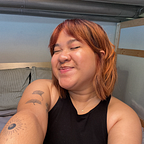How Bullet Journaling Introduced Me to Intentionalism
You’ve seen it. Videos of beautiful, gold calligraphy that spills out of (probably very expensive) fountain pens, the effortless yet very complex one-shot doodles that don’t even have a pencil sketch, and the handwriting that looks like it could be its own font on Microsoft Word.
At a whooping 4.6 MILLION posts on Instagrams under the hashtag, #bulletjournal, the art of bullet journaling (or bujo for short) has taken the world by storm. Artists and other creatives are using this method to not only organize their lives, but to showcase their creativity; hopefully allowing others to gain inspiration from their work to incorporate within their own yearly, monthly, weekly, or daily spreads.
Bullet journaling was first created by Ryder Carroll, who grew up with learning disabilities. Bullet journaling is more meaningful than just organizing your life, but it is coined as “the art of intentional living.” I haven’t ever really experimented with doing things with intent until this year, and bullet journaling has really amplified this and I didn’t even realize this.
My first encounter with bullet journaling was from YouTuber AmandaRachLee. Her monthly “PLAN WITH ME” videos struck me the most — she would have a different theme for every month, use all of her beautiful Tombow brush pens and her artistic nature to create an eye-catching monthly spread all in a span of ten minutes. If she could make this look so effortless, so can I, right? Wrong.
Doodles are harder than they look.
Seeing all of these beautiful, intricate, but seemingly simple doodles of little plants, people, and objects being drawn so effortlessly makes me think, “Yeah. I could totally do that.” Then it ends up looking nowhere near as clean cut as my inspiration piece.
As someone who doesn’t consider herself much of an artist, the simple art of doodling is quite challenging for me. I know what you’re saying, “Jira, you shouldn’t care about what your bujo looks like, it’s yours! Why does it matter?” It matters. Having doodles that are crossed out all within my journal creates clutter. Clutter in my journal means clutter in my brain.
If you’re left handed, chances of learning calligraphy are slim.
Yes, it is in fact possible to learn calligraphy as a lefty. Is it more difficult? I think so. Will you have to re-learn how you write and position your paper so you don’t smudge ink everywhere? Absolutely.
I am NOT saying it’s impossible. But you need to have an immense amount of patience and resilience to learn calligraphy as a lefty. I applaud anyone who has done so — but not me. I can’t even write without leaving a trail of ink behind.
Fear not though! The act of bullet journaling and going through this process of experimentation has really helped me find my groove. I like to think of my bullet journal as an agenda book on steroids type beat. It’s minimal (I like to think), and I use only one yellow Mildliner. I primarily use my journal as an extensive planner as well as a notebook to jot down notes or ideas.
For every yearly spread, I write out the year in monthly calendars, my quarterly goals, and a mass gratitude log. For 2020 however, I included a “2020 in Polaroids” spread- taking my most favorite polaroids of the month and sticking them in there. Gives me a sense of creativity.
Monthly spreads are put on four pages. A monthly log that outlines the whole month including due dates, trips, holidays, and important events. A daily habits spread to track my cleaning, water consumption, journal, exercising, and writing habits. A goals log that is separated by weeks to make my goals a bit more realistic. Then two whole pages side-by-side to allow me to reflect upon myself and my happenings. It’s a good way to start and end my days.
I realized after my first year of bullet journaling, I was writing assignments and things to do, just so they were there. Did I ever reference my journal to see the assignments I had to do? No. Did I ever do said assignments? No. I didn’t hold myself accountable for those assignments because of the sheer amount of things I had myself do for one day was just too much. It wasn’t realistic in the slightest.
I started to become more and more intentional with the things I write in my journal. Can I finish this assignment today and push the other one for tomorrow? Should I replace this event with something else more productive? Could I timeblock today so I could work more efficiently?
Tracking my habits made me realize a few things; I wasn’t cleaning as much as I wanted to. I didn’t read as often as I thought I did. I definitely wasn’t drinking as much water as I was supposed to, and I didn’t exercise as often as I used to. Being able to cross off that number brings me a spark of joy, like, “Hell yeah, Jira, take charge of your life. Crush it.”
Separating my monthly goals into weekly goals is something new that I’m trying. I found that creating bullets for monthly goals didn’t help me, and I didn’t really achieve what I wanted to. Spreading them into weekly goals makes them more realistic, and now I have a timeframe of when I want to accomplish them.
After conquering the insecurity of not being artistic enough to doodle all around my bullet journal, I realized that having an artistic journal like Amanda just isn’t my thing. Bullet journaling is different for everyone, and I think Carroll introducing it as a method of learning intentionalism is an excellent idea — wanting to create a bullet journal is already the first step.
